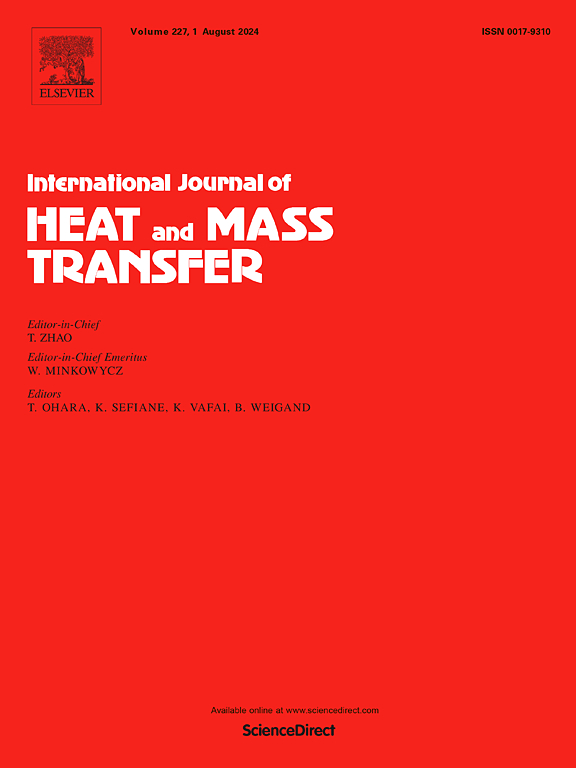Flow and heat transfer characteristics of porous plate in combustion chamber
IF 5
2区 工程技术
Q1 ENGINEERING, MECHANICAL
International Journal of Heat and Mass Transfer
Pub Date : 2025-02-25
DOI:10.1016/j.ijheatmasstransfer.2025.126881
引用次数: 0
Abstract
Transpiration cooling is an important active thermal protection technology in advanced spacecraft. This work aims to study the flow and heat transfer mechanisms to accurately predict the transpiration cooling performance. Consequently, this work employs a real gas model coupled with a combustion model to establish a model for transpiration cooling of porous plates in the combustion chamber. The flow and heat transfer mechanism of porous plate transpiration cooling is thoroughly discussed, and the impact of the Joule-Thomson effect on the temperature of porous transpiration is considered. The evolution pattern of transpiration cooling characteristics under trans-critical conditions is studied. The results demonstrated that heating and cooling coexist in the porous plate. The lowest temperature is 8 K less than the inlet temperature of the coolant, and along the axial direction, the temperature declines first and then rises. When the porosity is 0.12 and the pore diameter is 60 μm, the temperature non-uniformity of the porous plate reaches its peak. The cooling effectiveness of CO2 coolant is 20% higher than the other four coolants, while the blowing ratio of CO2 coolant is 36.62% higher than the minimum blowing ratio of CO. The research outcomes can help guide the choice of porous plate parameters, coolant types, and coolant inlet temperature, thereby improving the cooling performance and thermal stability of transpiration plates.
求助全文
约1分钟内获得全文
求助全文
来源期刊
CiteScore
10.30
自引率
13.50%
发文量
1319
审稿时长
41 days
期刊介绍:
International Journal of Heat and Mass Transfer is the vehicle for the exchange of basic ideas in heat and mass transfer between research workers and engineers throughout the world. It focuses on both analytical and experimental research, with an emphasis on contributions which increase the basic understanding of transfer processes and their application to engineering problems.
Topics include:
-New methods of measuring and/or correlating transport-property data
-Energy engineering
-Environmental applications of heat and/or mass transfer

 求助内容:
求助内容: 应助结果提醒方式:
应助结果提醒方式:


